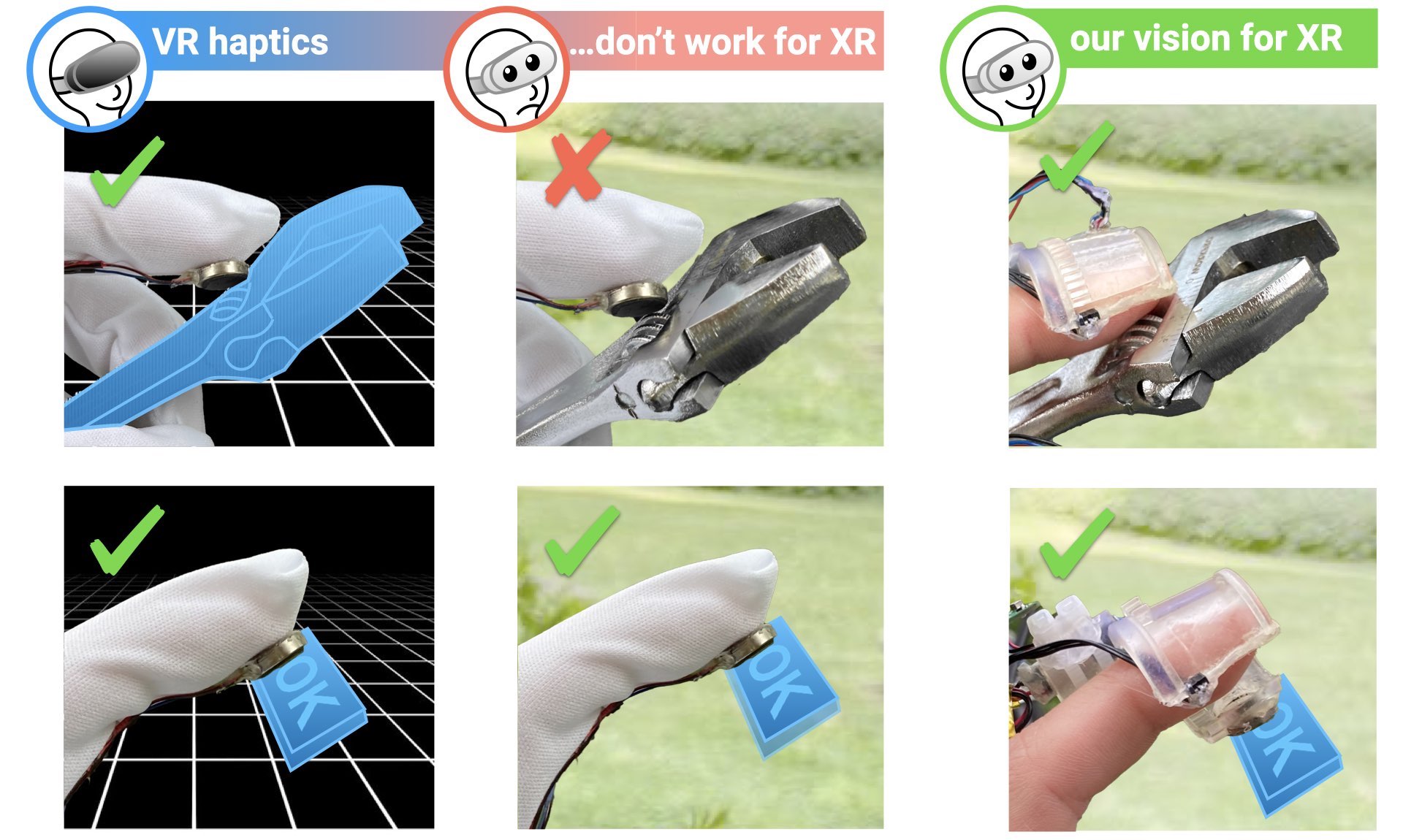XR needs “mixed feelings”: engineering haptic devices that work in both virtual and physical realities

(left) Traditional haptic gloves for VR cover the user’s hands to provide a sense of touch when interacting with virtual objects (here, a virtual wrench or a virtual button). However, despite the fact this is a time-tested and common approach to haptics, it is not compatible with XR—in XR users also interact with physical objects besides virtual ones. (center) As such, adopting haptics for VR to XR experiences fails—for example, here, the haptic gloves block sensations from the physical wrench. We argue we need a paradigm shift in our way of thinking about haptics. (right) Our vision for XR haptics is that the haptic devices “respect” the physical objects by keeping user’s fingerpads free to manipulate physical objects, and only cover up the fingerpads to stimulate the skin when the user touches the virtual button.
| Authors | Shan-Yuan Teng, Pedro Lopes, University of Chicago |
| Publication | Shan-Yuan Teng, Pedro Lopes. 2022. XR needs “mixed feelings”: engineering haptic devices that work in both virtual and physical realities. XRDS 29, 1 (Fall 2022), 44–47. https://doi.org/10.1145/3558194 |
| Paper | PDF (3.6MB) |